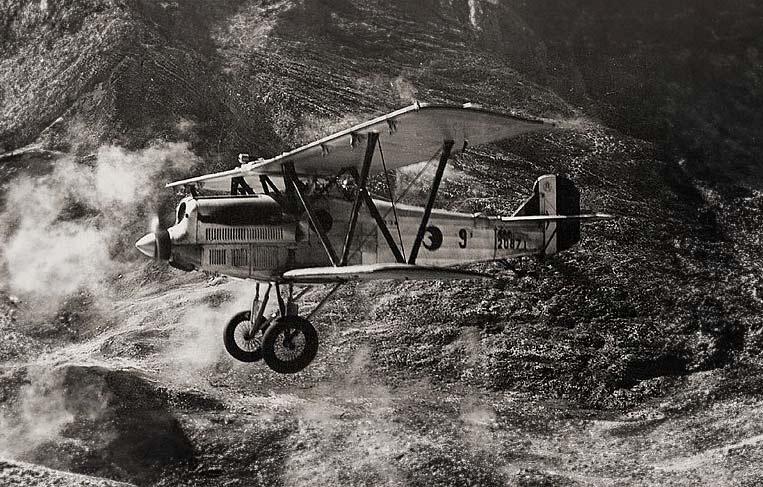The Fiat CR.20, a 1920s Italian biplane fighter, known for its robust construction and Fiat A.20 engine, was a key transitional aircraft in military aviation. This article explores the Fiat CR.20, an influential Italian fighter aircraft of the 1920s. It discusses its development background, design characteristics, performance capabilities, military usage, and its place in aviation history.
The Fiat CR.20 holds a notable position in the evolution of military aviation as an interwar period fighter. This piece provides an in-depth look into its development, design, performance, and operational history, showcasing its significance in the transition from World War I to more advanced aircraft designs.
History of the Development of the Fiat CR.20:
Developed in the aftermath of World War I, the Fiat CR.20 emerged during a period of significant technological advancements and shifting military aviation needs. The end of the war had left many countries looking to modernize their air forces with more advanced, reliable, and versatile aircraft.
The development of the CR.20 was initiated by Fiat, Italy’s leading aircraft manufacturer, under the guidance of aeronautical engineer Celestino Rosatelli. The program began in the early 1920s with the goal of creating a fighter that could outperform the biplanes of World War I in speed, agility, and firepower. The CR.20 first flew in 1926, marking a significant step in Italian military aviation.
This period was characterized by rapid advancements in aircraft design, including the transition from wood to metal construction and the development of more powerful engines. The CR.20 was developed in response to these trends, aiming to position Italy at the forefront of military aviation technology.
Design of the Fiat CR.20:
The Fiat CR.20 was a reflection of the transitional phase in aircraft design of the 1920s. It was a single-seat biplane with a wingspan of 31 feet 2 inches (9.5 meters) and a length of 23 feet 7 inches (7.19 meters). The aircraft combined a traditional biplane layout with some advanced features for its time.
Powered by the Fiat A.20 V-12 engine, the CR.20 was capable of producing approximately 420 horsepower (313 kW). This engine selection was significant, as it offered a good balance of power and reliability.
The design of the CR.20 included a mixed construction, with a metal frame covered in fabric. This made the aircraft more robust than earlier all-wood designs while maintaining a relatively light weight. It also featured innovations like a more streamlined fuselage and an improved wing design for better aerodynamic efficiency.
However, the CR.20’s biplane configuration limited its maximum speed and maneuverability compared to the emerging monoplane designs of the era. Despite these limitations, it was considered advanced for its time and influenced subsequent aircraft designs.

Performance of the Fiat CR.20:
In performance terms, the Fiat CR.20 was a competent aircraft for its era. The Fiat A.20 engine enabled a top speed of about 137 mph (220 km/h), which was competitive at the time. The aircraft had a service ceiling of approximately 22,965 feet (7,000 meters) and a range of around 342 miles (550 km).
When compared to contemporary fighters like the French Nieuport-Delage NiD 29 or the American Curtiss P-1 Hawk, the CR.20 was generally on par in terms of speed and agility. Its robust construction made it a reliable platform, although it was outpaced by the development of more advanced monoplane fighters.
Military Use and Combat of the Fiat CR.20:
The Fiat CR.20 was primarily used by the Italian Regia Aeronautica (Royal Air Force) and saw limited export to other countries. Its armament typically consisted of two synchronized machine guns, standard for fighters of that era.
The CR.20 served throughout the late 1920s and 1930s and was involved in various conflicts, including the Italian colonization efforts in North Africa. It was valued for its reliability and ease of maintenance, important factors in the harsh conditions of the desert.
The aircraft was eventually replaced by more advanced models like the Fiat CR.32 and CR.42 as technology progressed. The CR.20’s military service marked an important period in the transition from the biplane to the more advanced monoplane fighters that would dominate in World War II.
The Fiat CR.20 was a significant step in the evolution of fighter aircraft during the interwar period. It combined robust construction with improved performance, setting the stage for the development of more advanced aircraft. While it may not have been the most groundbreaking fighter of its time, the CR.20’s contribution to the advancement of military aviation technology and its operational history solidify its place in the annals of aviation history.
Back to the Warbirds section.